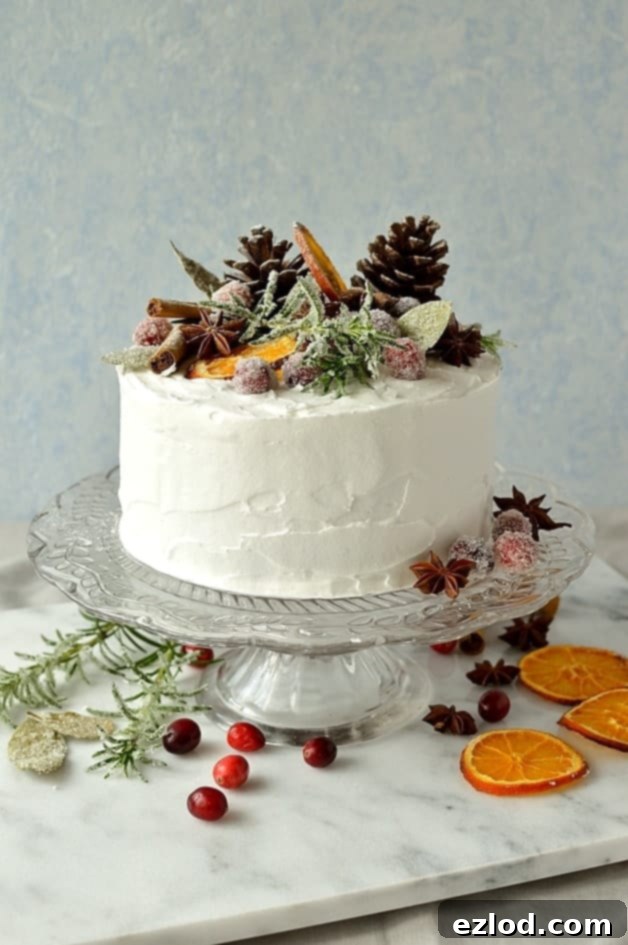Delicious Gingered Christmas Fruitcake: A Moist & Rustic Holiday Masterpiece Recipe
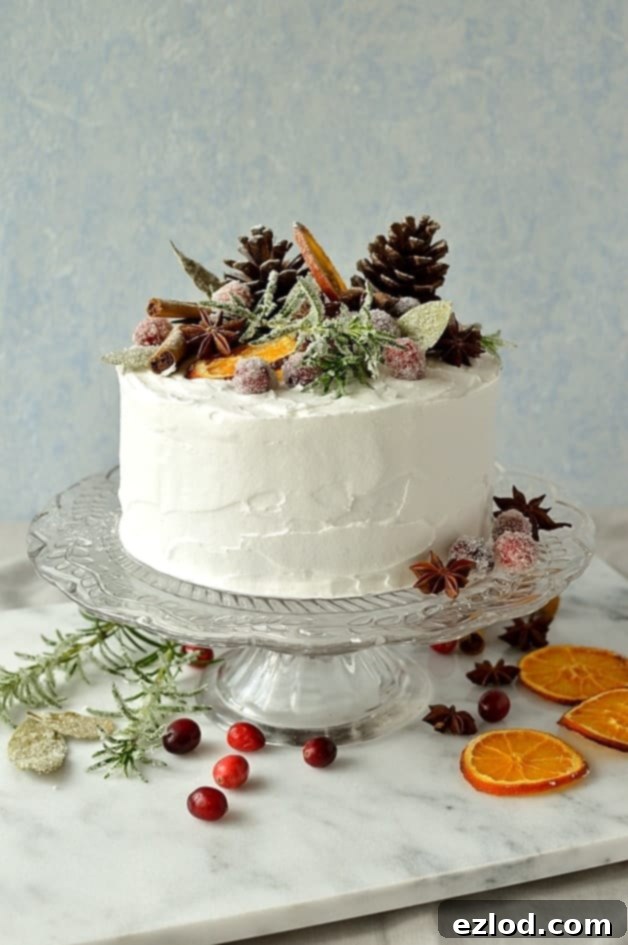
Fruitcake often finds itself at the center of a lively debate. While some people approach it with extreme caution, and even a fiery aversion, I proudly stand firm in the camp of fruitcake enthusiasts. For me, a well-made fruitcake is a culinary delight that transcends the holiday season, a treat I would happily savor all year round. However, there’s no denying its quintessential role in Christmas celebrations, adding a rich, spiced aroma and comforting warmth that truly defines the festive spirit. This particular recipe for Gingered Christmas Fruitcake is designed to win over even the most skeptical palates, offering a perfectly moist texture, an irresistible burst of ginger, and a beautiful rustic charm that makes it an absolute showstopper.
Traditionally, a classic Christmas cake is prepared well in advance – often weeks or even months before it’s enjoyed – allowing its flavors to mature and deepen, frequently “fed” with generous amounts of spirits. While I wholeheartedly appreciate this time-honored tradition, my organizational skills sometimes fall short of such meticulous planning. This recipe, therefore, is a testament to delicious spontaneity; it’s designed to require minimal maturing time, making it perfect for those who, like me, find themselves needing a magnificent fruitcake without the lengthy lead-up. That being said, if you *do* wish to get ahead, making it a month or so in advance and giving it a few extra feeds will only enhance its already incredible flavor and moisture, truly transforming it into a luxurious indulgence.
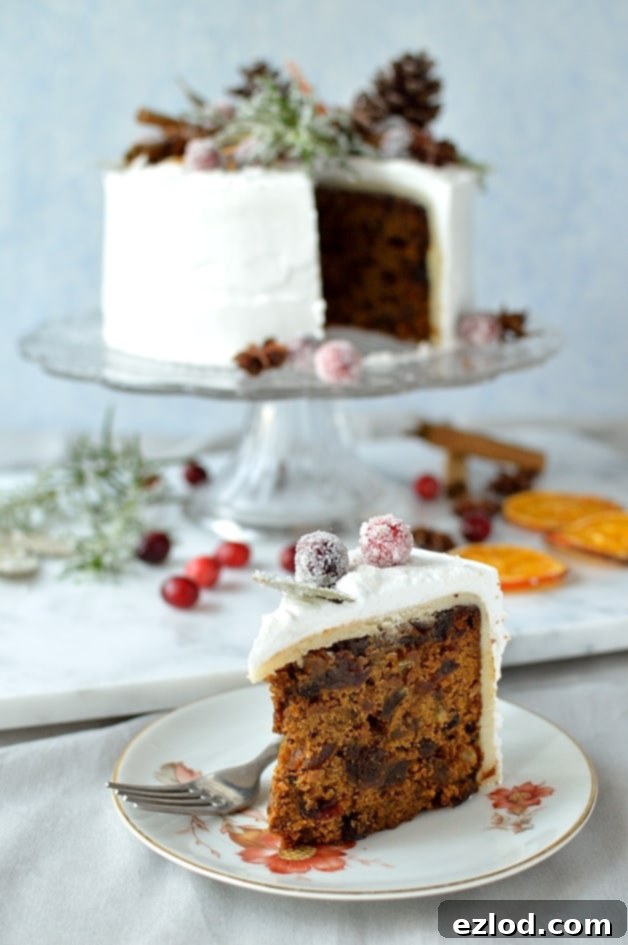
Crafting the Perfect Moist & Flavorful Base
My own cake was baked a mere week before I applied the festive icing, and during that brief period, I nourished it with a couple of spoonfuls of delicious liqueur on two separate occasions. The result was a cake that was unbelievably moist and bursting with flavor, a testament to thoughtful ingredient selection. The secret lies in the inclusion of chopped figs and dates within the fruit mixture. These naturally sweet and succulent dried fruits are powerhouses of moisture, ensuring the cake remains tender and rich without becoming dry or crumbly, even with minimal aging. Their subtle caramel notes also add a delightful complexity to the overall flavor profile.
Beyond the inherent moisture from the figs and dates, I employed another crucial technique: pre-soaking the dried fruits. By allowing them to plump up in a blend of alcohol and fresh orange juice overnight, each piece becomes incredibly succulent and infused with flavor before it even enters the batter. This step is vital for achieving that desirable moist texture and ensuring an even distribution of flavor throughout the cake. But what truly sets this fruitcake apart is its generous infusion of ginger. I incorporated a substantial amount of both chopped crystallised ginger and finely chopped stem ginger. The crystallised ginger offers chewy, intense bursts of warmth, while the stem ginger provides a softer, more mellow spice, creating a delightful interplay of textures and a comforting heat that perfectly complements the rich fruits.
When it came to choosing the spirit for soaking the fruit and feeding the cake, I opted for Cointreau primarily because it was readily available in my cupboard. Its bright, zesty orange notes pair beautifully with ginger and dried fruits, adding a sophisticated touch. However, this is one area where you can truly personalize your fruitcake. Feel free to use your preferred spirit: ginger wine will amplify the ginger kick, while rum offers a classic depth, brandy provides a warm, fruity aroma, and sherry adds a nutty sweetness. Each choice will impart a unique character to your finished cake, allowing you to tailor it to your taste.
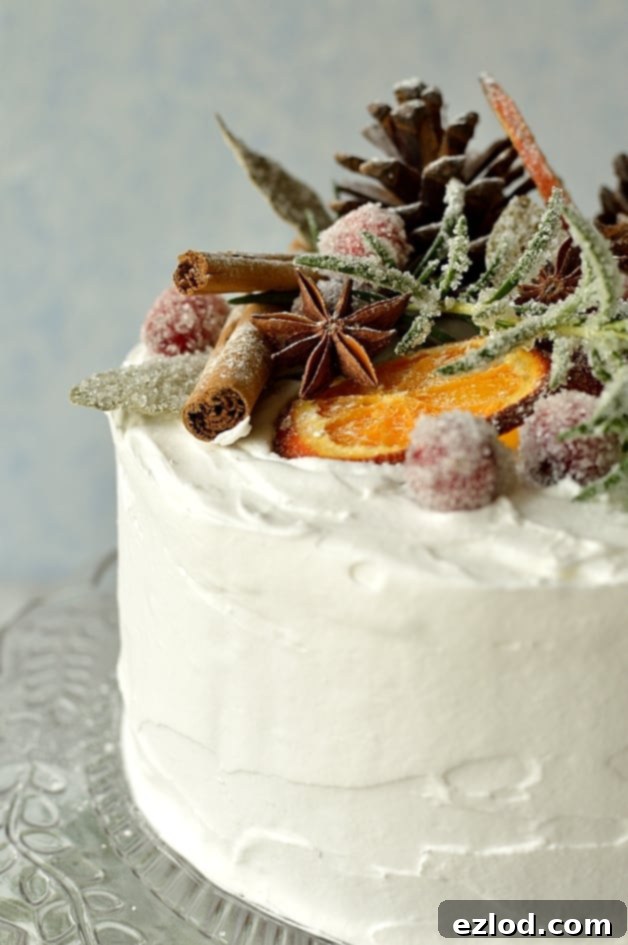
The Essential Layers: Marzipan & Royal Icing
No traditional Christmas fruitcake is complete without its iconic layers of marzipan and royal icing, and this gingered version is no exception. I prepared the royal icing from scratch, a surprisingly simple process that yields a pristine, bright white finish. It’s important to note that homemade royal icing typically contains raw egg white, so if you have any dietary concerns regarding raw eggs, a good quality royal icing box mix is a perfectly acceptable and convenient alternative that will still deliver excellent results. The marzipan layer, applied first, provides a smooth, sweet almond barrier that not only seals in the cake’s moisture but also creates the perfect canvas for the elegant royal icing. The slight unevenness and rustic peaks of the royal icing on this cake are intentional, contributing to its charming, handcrafted appeal.
Embracing Rustic Elegance: Natural Christmas Decorations
The decorations adorning this Gingered Christmas Fruitcake are wonderfully simple to create yet result in an absolutely stunning, rustic aesthetic. While beautiful, it’s crucial to remember that many of these natural elements are purely for display and are not edible. My festive tableau included a couple of small pine cones, originally charming Christmas tree ornaments, which add a touch of woodland magic. These were complemented by aromatic cinnamon sticks and star anise, dried orange slices with their vibrant color and subtle citrus scent, and a scattering of sugared cranberries, rosemary sprigs, and bay leaves.
Creating these sugared elements is a delightful process. For the sugared cranberries, rosemary, and bay leaves, you simply beat an egg white until slightly frothy with a touch of caster sugar, then dip the fresh cranberries and herb sprigs into the mixture, shaking off any excess. A roll in granulated sugar and a brief drying period transforms them into glistening, frosted gems that look like they’ve just been kissed by a winter snowfall. The dried orange slices are equally straightforward: thin slices of orange are slowly baked at a very low oven temperature until dried, offering a beautiful, natural warmth to the decoration.
Because some of these decorations, such as the fresh cranberries and rosemary, are perishable, it’s best to hold off on decorating the cake until closer to the time you intend to display or serve it. This ensures their freshness and vibrant appearance, maintaining the cake’s festive charm throughout your celebrations. The rustic approach allows for creative freedom, enabling you to arrange these elements in a way that feels natural and inviting, transforming your fruitcake into a true work of edible art.
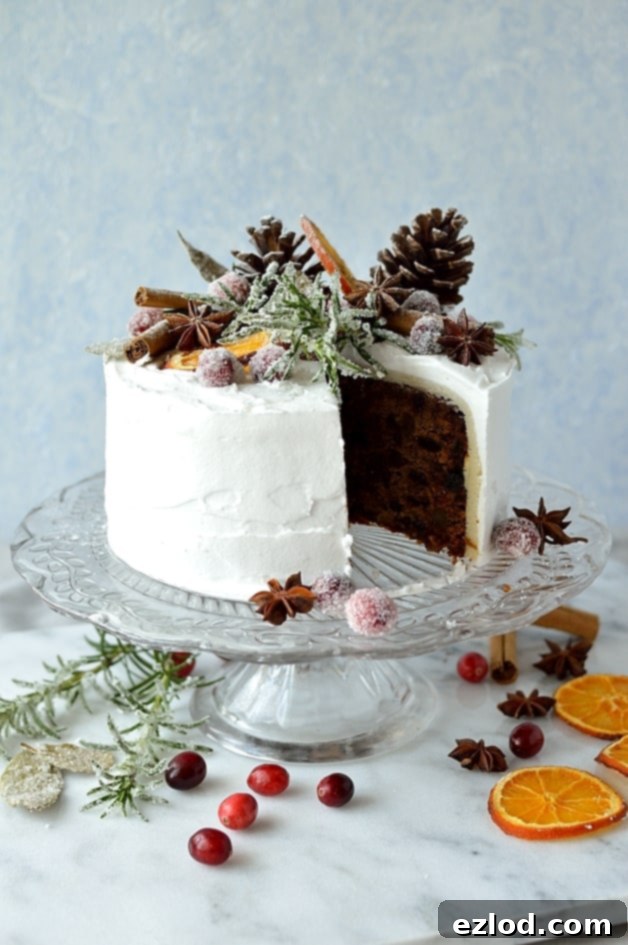
Essential Baking Tools: Making Life Easier in the Kitchen
For the creation of this fruitcake, I was fortunate enough to receive a thoughtful selection of baking tools from Domu, including a hand mixer, a cake lifter, and a set of cake decorating tools. The hand mixer, in particular, was a welcome upgrade. My previous mixer was an antique, a cherished heirloom from my late grandmother, but admittedly, it lacked the power and efficiency of modern appliances. Switching to a more powerful, contemporary mixer made the creaming of butter and sugar, and the whisking of royal icing, an absolute breeze, significantly streamlining the baking process. Modern kitchen gadgets truly make a difference, saving time and effort, especially during busy holiday baking seasons.
The cake lifter also proved to be an incredibly useful gadget. Gone are the days of precariously attempting to transfer a weighty, richly decorated fruitcake using a couple of unwieldy spatulas! This simple yet effective tool provides stable support, allowing you to move your culinary masterpiece safely and effortlessly from counter to stand, or into its storage spot. While I initially considered making fondant decorations for this cake, I ultimately opted for the rustic natural elements, so the cake decorating tools weren’t used this time. However, I have no doubt they will prove invaluable for future baking projects and intricate designs. Incidentally, all these practical and high-quality items would make fantastic Christmas gifts for the avid baker in your life, adding both convenience and joy to their kitchen adventures.
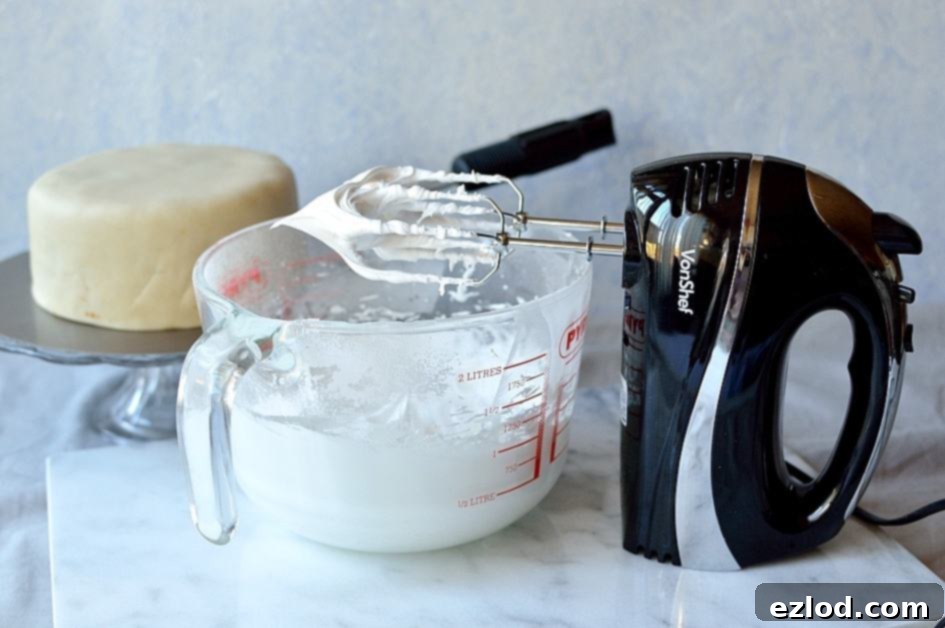
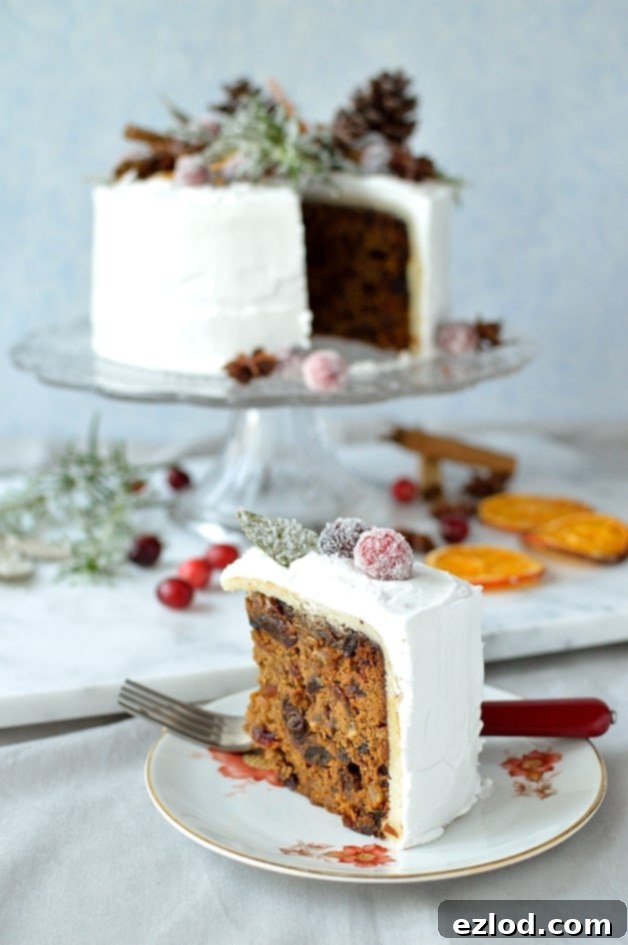
Gingered Christmas Fruitcake Recipe: Your Guide to a Festive Delight
This recipe brings together the timeless tradition of Christmas fruitcake with a vibrant, modern twist of spicy ginger and a beautifully understated rustic decoration. It’s a celebration of rich flavors, appealing textures, and comforting aromas, making it the perfect centerpiece for your holiday table or a heartfelt homemade gift. Follow these steps to create a truly memorable Gingered Christmas Fruitcake that will be cherished by all who taste it.
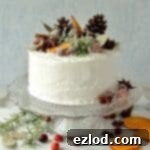
Gingered Christmas Fruitcake With Rustic Decorations
Ingredients
Cake
- 80 g (2.8oz) dried figs, chopped
- 65 g (2.3oz) dried cranberries
- 65 g (2.3oz) dates, chopped
- 50 g (1.75oz) glace cherries, chopped
- 30 g (1oz) mixed candied peel
- 50 g (1.75oz) raisins
- 50 g (1.75oz) sultanas
- 50 g (1.75oz) currants
- 100 g (3.5oz) crystallised ginger, chopped
- 50 g (1.75oz0 stem ginger, finely chopped
- zest of 1 + juice ½ orange
- zest of 1 lemon
- 1 tbsp stem ginger syrup
- 4 tbsp ginger wine/rum/brandy/cointreau/sherry plus extra for feeding
- 140 g (⅓ + ¼ cups) softened butter
- 140 g (⅔ cup + 2tbsp) light brown soft sugar
- 1.5 tbsp treacle
- 2 eggs
- 175 g (1 + ½ cups) plain flour
- 40 g (⅓ cup) ground almonds
- 1 ½ tsp ground ginger
- ½ tsp ground cinnamon
- ½ tsp ground nutmeg
- ¼ tsp ground cardamom
- ⅛ tsp ground cloves
- pinch salt
Royal icing
- 3 tbsp apricot jam or marmalade
- 500 g (17.5oz) marzipan
- 2 large egg whites
- 400 g (4 cups) icing (powdered) sugar, sifted
- 1 ½ tsp lemon juice
- 1 tsp glycerine optional, but stops the icing from set rock solid
Decoration
- 1 small orange
- a couple of small pine cones
- 1 egg white
- 2 tsp caster sugar
- handful fresh cranberries
- couple sprigs fresh rosemary
- a few bay leaves
- granulated sugar
- cinnamon sticks
- star anise
- icing sugar
Instructions
-
The day before you want to bake the cake, mix all of the dried fruits together in a large bowl and stir in the orange and lemon zests, orange juice, stem ginger syrup and alcohol, cover and leave to soak overnight.
-
The following day, preheat the oven to 150C/300F/gas mark 2. Grease a deep 15cm/6in round cake tin and line the base and sides with a double thickness of baking parchment, making sure that it comes a good 10cm above the top of the tin.
-
Cream together the butter, sugar and treacle with an electric mixer until pale, then add the eggs one at a time, beating well after each addition. Add a spoonful of the flour if the mixture looks like it is about to split.
-
Sift together the flour, ground almonds, spices and salt then fold into the the creamed mixture followed by the soaked fruit; combine well.
-
Scrape the cake mixture into the prepared tin and level the surface. Bake for 2 hours to 2 hours 45 minutes until a skewer inserted into the centre comes out clean; cover with tin foil if it starts to get too dark.
-
When the cake is ready, sprinkle a couple of tablespoons of your choice of alcohol over the top then leave it to cool completely in the tin. When cold, remove it from the tin and peel off the parchment; wrap in tin foil and store for up to three weeks, feeding it with alcohol a couple of times a week. I stored it for one week before covering it in marzipan, feeding it twice.
-
When you are ready to ice the cake, trim the top to level it if necessary, turn it upside down and place it on a cake board or serving platter; use a little of the marzipan to fill in any holes in the cake and gaps between the cake and board. Gently warm the jam in a microwave or in a small pan on the stove until it is runny then brush a thin layer of it all over the cake, avoiding any bits.
-
Knead the marzipan a little to warm it up, then roll it out on a surface dusted with icing sugar to a large circle about 5mm thick. Drape the marzipan over the top of the cake, dust your hands with icing sugar and smooth the marzipan over the top and sides to cover the cake completely, working out any folds and wrinkles. Trim to make a neat edge. At this point you can leave the cake to dry out for a couple of days if you like, or proceed straight to making the icing.
-
Place the egg whites in a large, very clean bowl and whisk until they are just foamy. Stir in the icing sugar a spoonful at a time with a spatula then add the lemon juice and glycerine if using. Whisk with an electric mixer until it is very thick and white and stands up in stiff peaks.
-
Cover the top and sides of the cake with the royal icing, smoothing it with a palette knife. Try to level the top but don’t worry about getting it completely smooth, it should be a slightly rough finish. You will probably have a bit of icing left over, it will keep, covered, in the fridge for a week.
-
Allow the icing to dry a little before decorating. While it is drying make the dried orange slices. Heat the oven to it’s lowest setting. Cut the orange into thin slices and lay them on a wire rack; place the rack in the oven and bake for a couple of hours until dried; they will still feel a little bit tacky. remove from the oven and leave to cool.
-
To make the sugared cranberries, rosemary and bay leaves, beat the egg white with the 2tsp sugar until just frothy. Pour some granulated sugar in a shallow bowl. Dip the cranberries in the egg white and shake off any excess, allow to dry a little then roll in the sugar, place on a tray and leave to dry for at least half an hour; repeat with the rosemary and bay leaves.
-
Arrange the pine cones, a couple of the dried orange slices, the sugared cranberries, rosemary and bay leaves and a few cinnamon sticks and star anise on the top of the cake and finally dust with a little icing sugar.
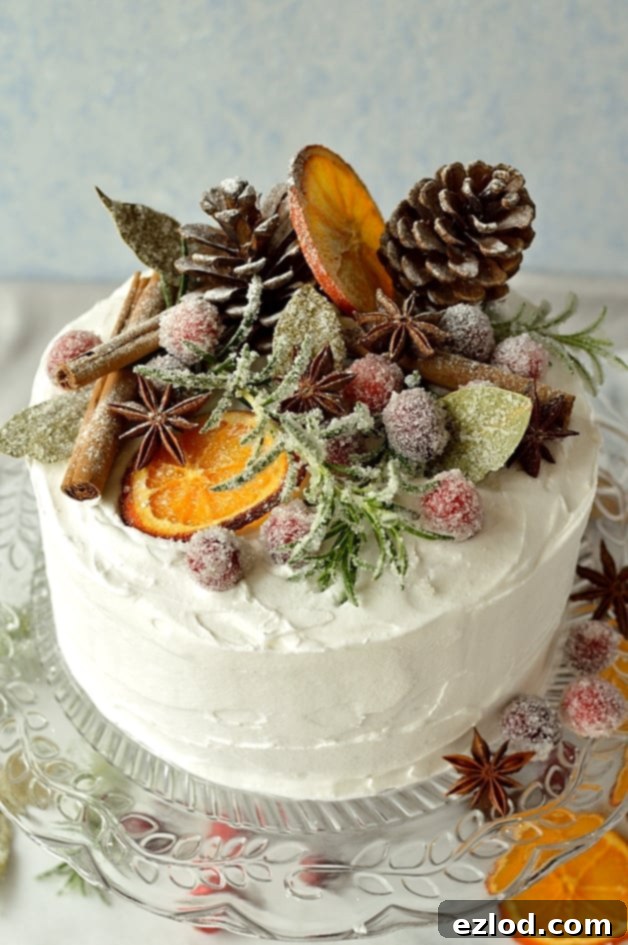
Embrace the Festive Flavor: Why This Fruitcake is a Must-Bake
This Gingered Christmas Fruitcake isn’t just a dessert; it’s an experience. From the moment the rich, spicy aroma fills your kitchen to the first bite of its incredibly moist, fruit-laden crumb, it evokes all the joy and warmth of the holiday season. The thoughtful combination of diverse dried fruits, the invigorating kick of both crystallised and stem ginger, and the nourishing touch of a chosen spirit all contribute to a depth of flavor that is truly exceptional. The elegant marzipan and royal icing provide the perfect sweet contrast, while the rustic, natural decorations turn each cake into a unique piece of festive art. Whether you’re a lifelong fruitcake lover or a curious newcomer, this recipe promises to deliver a delightful and memorable addition to your Christmas traditions. So, gather your ingredients, embrace the spirit of holiday baking, and prepare to create a fruitcake that will be talked about long after the last slice is savored. Happy baking!
